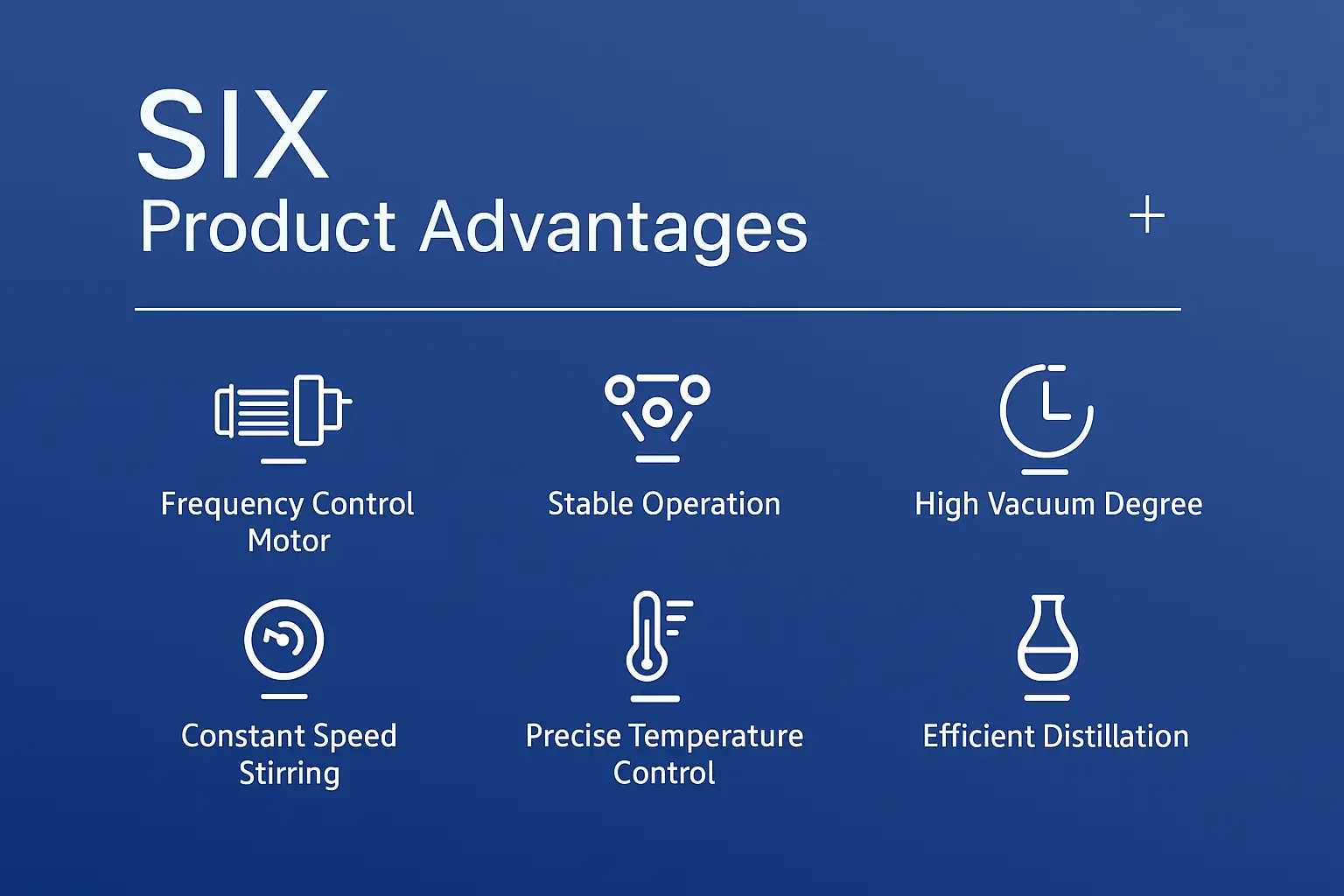The Magic of Glass Batch Reactors
See Through Science: How Transparent Technology is Revolutionizing Labs Worldwide
Ever peeked into a chemistry lab and wondered about those fascinating glass contraptions with swirling liquids and bubbling reactions? Those, my friends, are glass batch reactors - the unsung heroes of modern laboratories. Forget the clunky, opaque steel tanks of the past. Today's scientists demand visibility, precision, and versatility. That's where glass batch reactors shine!
In this deep dive, we'll explore why these transparent powerhouses have become indispensable in industries ranging from pharmaceuticals to specialty chemicals. Whether you're a seasoned researcher or just science-curious, prepare to see laboratory technology in a whole new light.

A modern glass batch reactor system in a research laboratory
What Exactly is a Glass Batch Reactor?
At its core, a glass batch reactor is a specialized vessel designed for chemical reactions, mixing, distillation, and other processes - all visible through transparent borosilicate glass. Unlike continuous reactors that constantly feed materials, batch reactors process fixed quantities at a time, giving researchers complete control over each reaction phase.
Why Glass?
Glass offers something no metal can: complete visibility. Researchers can monitor color changes, precipitation, phase separations, and gas evolution in real-time. According to a MIT study, visual monitoring improves experimental success rates by up to 40% compared to opaque systems. Plus, glass is chemically inert - it won't react with your precious compounds!
The Jacketed Advantage
Most modern glass reactors feature a "jacketed" design - essentially a double-walled vessel. This brilliant innovation allows temperature control fluids to circulate between the walls, heating or cooling reactions without direct contact. The result? Precision temperature control and safer operations.

Why should visibility matter in chemical reactions?
Great question! Visibility isn't just convenient - it's transformative. Seeing reactions in real-time allows scientists to:
Spot problems immediately (like unexpected precipitates or phase separations)
Make on-the-fly adjustments to temperature or mixing speed
Document the entire reaction process visually
Train new researchers by showing rather than telling
Reduce sampling frequency, minimizing contamination risks
In pharmaceutical research, this visibility has reduced process development time by up to 30% according to industry reports.
Why Labs Are Switching to Glass
Unmatched Visibility
Watch crystallization, color changes, and phase separations as they happen. No more guesswork or frequent sampling.
Chemical Resistance
Borosilicate glass withstands acids, bases, and solvents that would corrode metal reactors. Perfect for aggressive chemistry.
Modular Flexibility
Easily add condensers, dosing pumps, or temperature probes. Adapt your setup as research needs evolve.
Precision Control
Jacketed designs enable ±0.5°C temperature accuracy. Essential for sensitive reactions and reproducibility.
Scale-Up Confidence
Small-scale glass reactor results reliably predict large-scale manufacturing outcomes. Minimize pilot plant surprises.
Enhanced Safety
Visual monitoring reduces opening/reactor entry. Containment options prevent exposure to hazardous materials.
Can glass reactors handle high-pressure applications?
While standard glass reactors typically operate at atmospheric pressure, specialized designs can handle moderate pressure. For extreme conditions, high-pressure reactors with metal bodies are recommended. However, glass excels in:
Atmospheric distillations
Crystallization studies
Multi-step synthesis
Reactions requiring visual monitoring
For processes like decarboxylation that need both visibility and pressure, hybrid systems with glass viewports offer solutions.
Where Glass Reactors Shine
Glass batch reactors aren't just for academic curiosity - they're workhorses in critical industries:
Pharmaceuticals: Drug synthesis, polymorph screening, and process development
Specialty Chemicals: Catalyst testing, fine chemical production, and material synthesis
Agrochemicals: Pesticide formulation and fertilizer research
Food Science: Flavor compound extraction and ingredient development
Petrochemicals: Additive development and refining process simulation
Particularly in crystallization processes, the ability to monitor crystal formation in real-time makes glass reactors indispensable for controlling particle size and morphology.

Finding Your Perfect Fit: Glass Reactor Sizes
From small-scale screening to pilot plant preparations, glass reactors come in various sizes. Here's a quick guide:
| Reactor Size | Ideal For | Key Features | Options |
|---|---|---|---|
| 1L Jacketed | Initial screening, expensive materials | Minimal material usage, high visibility | Magnetic stirring, temperature control |
| 5L Jacketed | Process development, optimization | Balance of material economy & scalability | Full instrumentation capabilities |
| 10L Jacketed | Pilot batches, small production | Significant material output, robust design | Advanced control systems |
| 20-50L Systems | Small-scale manufacturing | Production quantities, GMP compliance | Automation, data logging |
| 100L+ Systems | Specialized production, niche markets | Industrial-scale glass processing | Custom engineering options |
For most R&D labs, the sweet spot is between 1L and 10L. The versatile glass reactor systems in this range offer the perfect balance of flexibility and output.
Cost Analysis: Penny Wise or Pound Foolish?
Saving Money Is The Last Word, And It Is Worth Investing In Buying!
Long-Term Value
Quality glass reactors last 10-15 years with proper care. That's decades of reliable service!
Contamination Costs
Glass prevents metal leaching that can ruin batches costing thousands in materials
Efficiency Gains
Visible reactions reduce trial cycles by 25-40% according to industry studies
Consider this: A single failed batch in pharmaceutical research can cost $50,000+ in materials alone. The right reactor pays for itself in avoided failures!
How do I choose between glass and stainless steel reactors?
The choice depends on your specific needs:
Choose Glass When:
Visual monitoring is essential
Working with corrosive materials
Conducting crystallization studies
Performing small-scale R&D
Choose Stainless Steel When:
High pressure/temperature required
Large-scale production
GMP manufacturing
Abrasive materials are used
Many labs maintain both: glass for development and stainless for scale-up. Hybrid systems are also available!
The Future is Clear: What's Next for Glass Reactors

The evolution continues! Emerging trends include:
AI Integration: Machine learning algorithms analyzing visual reaction data
Smart Sensors: Real-time monitoring of multiple parameters
Modular Scaling: Systems that grow with your research needs
Cloud Connectivity: Remote monitoring and control capabilities
Sustainable Designs: Energy-efficient systems with reduced footprints
According to industry forecasts, smart glass reactor adoption will grow 15% annually through 2030 as labs embrace Industry 4.0 principles.
